I was on vacation with my fiance. We’re married now. So, things went well.
But, at the time, we had just gotten engaged actually.
We were out in California at a church conference I was a part of. In case you didn’t know, this was my life before web design.
The conference went great and we were on our way back to Arizona. We stopped at the outlet mall that literally everyone stops at on the i-10 coming back from California. That’s when I got the call.
“WordPress?! What do you mean you want to build my site in WordPress?!”
It was a client who had just hired me on Upwork.
It seemed like it was a great gig. She sent an offer without a phone call, interview or anything.
The price was right and the project seemed pretty straightforward. So, despite this nagging feeling that I was making a bad decision I went ahead and accepted.
I should have known not to take the job before at least a phone call BUT I took a chance and it turned out to bite me in the butt.
The client had a lot of hesitations about using WordPress as a platform. She’d heard that WordPress was horrible with security and was flabbergasted that I would even suggest.
This was despite the fact that 99% of the projects I’d done had been with WordPress. This was despite the fact that pretty much all of my portfolio clearly showed WordPress sites.
I digress.
Here I was on vacation trying to calm a client down over the phone.
All because I didn’t start the web design project the right way.
Lesson Learned
Suffice it to say, this project didn’t end well.
I did my best to put all of my client’s fears to rest but it was too late. They were ready to move on and there was nothing I could do.
The worst part is this was all avoidable.
If I had one small conversation before saying yes I could have avoided a lot of misunderstanding and ultimately a horrible experience for both me and the client.
That’s why the most important step in every freelance web design project is the first step.
If you’re not careful you can take on projects that you have no business taking on for clients that will make you want to pull your hair out.
Thankfully, I learned my lesson and developed a pretty strict process that I walk every client through before I say yes.
This ensures they are getting what they need in a freelancer and I’m avoiding the nightmare situation like the story above.
Here’s what I learned:
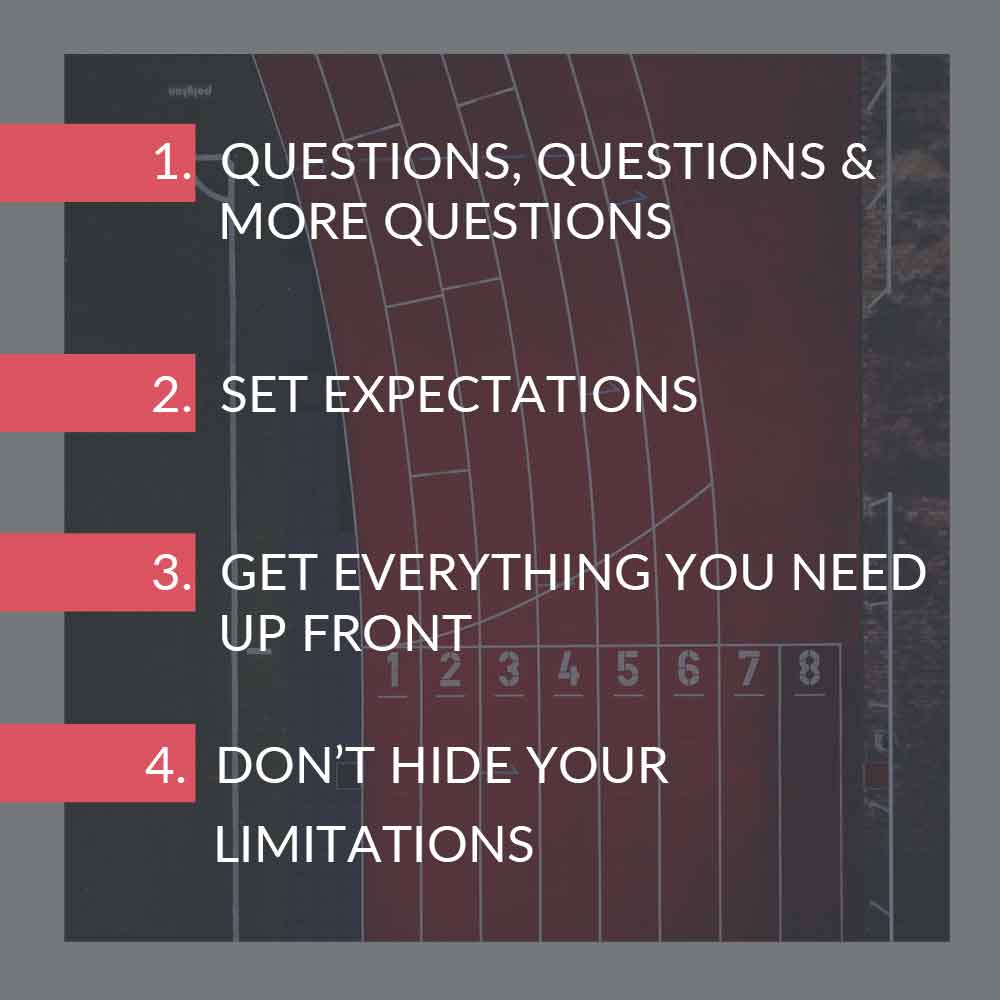
1. Ask Questions Questions & More Questions
You can’t have enough questions for a new client when you’re first getting started on a project.
You may think that you’re annoying the client but that’s just not the case. At least not for good clients.
For the most part, clients will want you to win and they’ll do what they can to make sure you have everything you need to do so.
So, don’t be afraid to ask as many questions as you can think of at the very beginning.
I have a questionnaire that every client has to fill out before we even have our first conversation. It’s pretty intense meaning there are a TON of questions to answer. And, that’s purposeful for 2 reasons.
- I want to make sure I don’t miss anything
- I want to make sure the client is willing to put in the effort to answer the questions. If they’re not, that’s a good sign they wouldn’t be great to work with.
If you want the exact questions I ask every client to start my web design projects the right way take a look at this free questionnaire.
A client will reveal a lot about themselves in the questionnaire process. If they sound like they have no clue what they want that’s a red flag. If they sound super meticulous about every single thing that’s a red flag. If they mention the last web designer they worked with and how bad they were THAT’S A BIG RED FLAG.
But you don’t know any of that stuff unless you ask.
After they get finished with the questionnaire, hop on a phone call!
You’ll clear up a lot of misunderstandings just by having a simple conversation. Even if you think you know exactly what they want and need ASK about it. Try to pull out deeper information from them. Like this:
Client:
“I like the color blue.”
You:
“Why do you like the color blue?”
Client:
“I don’t like my old website.”
You:
“Why don’t you like your old website?”
Not let generalities be enough for you. DIG DEEPER!
Before a phone call make sure you write down a list of things that you want to make sure you cover before the call ends.
I know if I don’t write things down I’ll hang up the phone and will forget some important questions that I was hoping to ask.
Plus, it makes you look extra prepared.
2. Set Expectations
I can’t stress enough that you have to make sure you’re setting good expectations with your client.
If you promise them the world just to get the job, trust me, it will come back to haunt you in the worst way.
Be as detailed as possible.
If you don’t work weekends, make sure they know that. If you’re unavailable at certain hours let them know.
Most people are reasonable and understand that healthy people have good boundaries. If not, ding ding ding, it’s a sure sign they are a bad client.
I try to communicate how often I’ll be getting in touch with them to keep them updated on my progress. Most of the time I’ll try to have updates every week on a certain day.
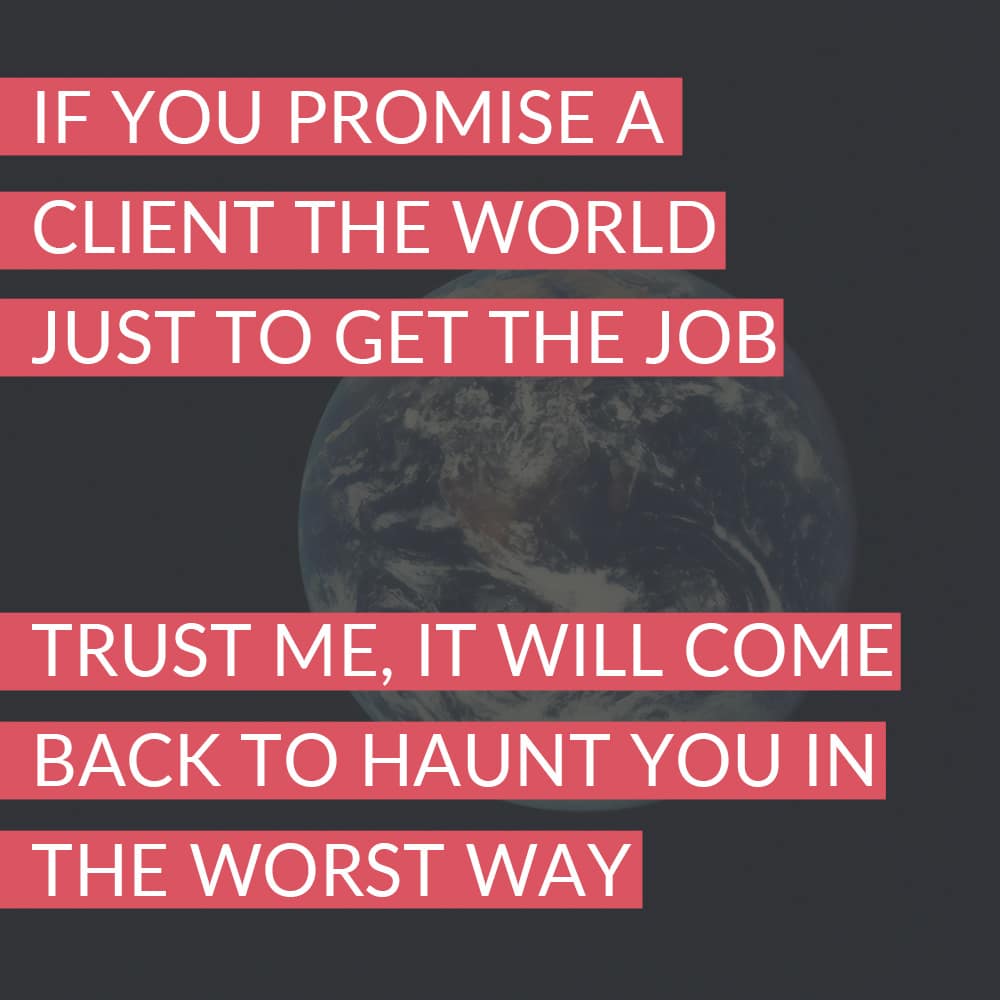
It’s not reasonable to ghost your client for a month, come back with a finished project and expect them to be happy.
You’ve got to make sure you’re keeping them clued in consistently.
At the end of every email or message, I try to let them know when I’ll get back to them again or when things will be done.
The key is to give yourself MORE TIME than you think you’ll need. And if it ends up going longer just let them know.
It’s also good to make sure they know what you are expecting from them. Let them know when you’ll need feedback and how quickly you’ll be able to turn around changes.
You’ll have a lot harder time getting clients to respond to you if you don’t have some type of conversation upfront and get the web design project started the right way.
Better yet, put all of that in a contract! That way there is no room for misinterpretation. And, if they come back around later, you’ve got a signed document that they agreed to.
3. Get Everything You Need Upfront
There are 2 things you’ll need from your client that if you don’t get it at the beginning you’ll have to chase them down for later on.
- Usernames & Passwords
- Content
For Usernames and Passwords, it’s best to use an app like 1Password or LastPass. That way they never actually have to share their password with you. You just get an invite to use their login credentials to what you need.
BUT, it’s sometimes hard to get clients to adopt new habits they’ve never done before. So, for every that scenario I use a Trello board that I customize per project and have clients fill out. There is a card for credentials on important things like:
- WordPress
- Mailchimp
- Hosting
- Domain
A lot of times the clients don’t even have these themselves. So, by letting them know you need them upfront it gives them some time to reset them and get back to you.
Content is the one thing that holds back projects more than any other.
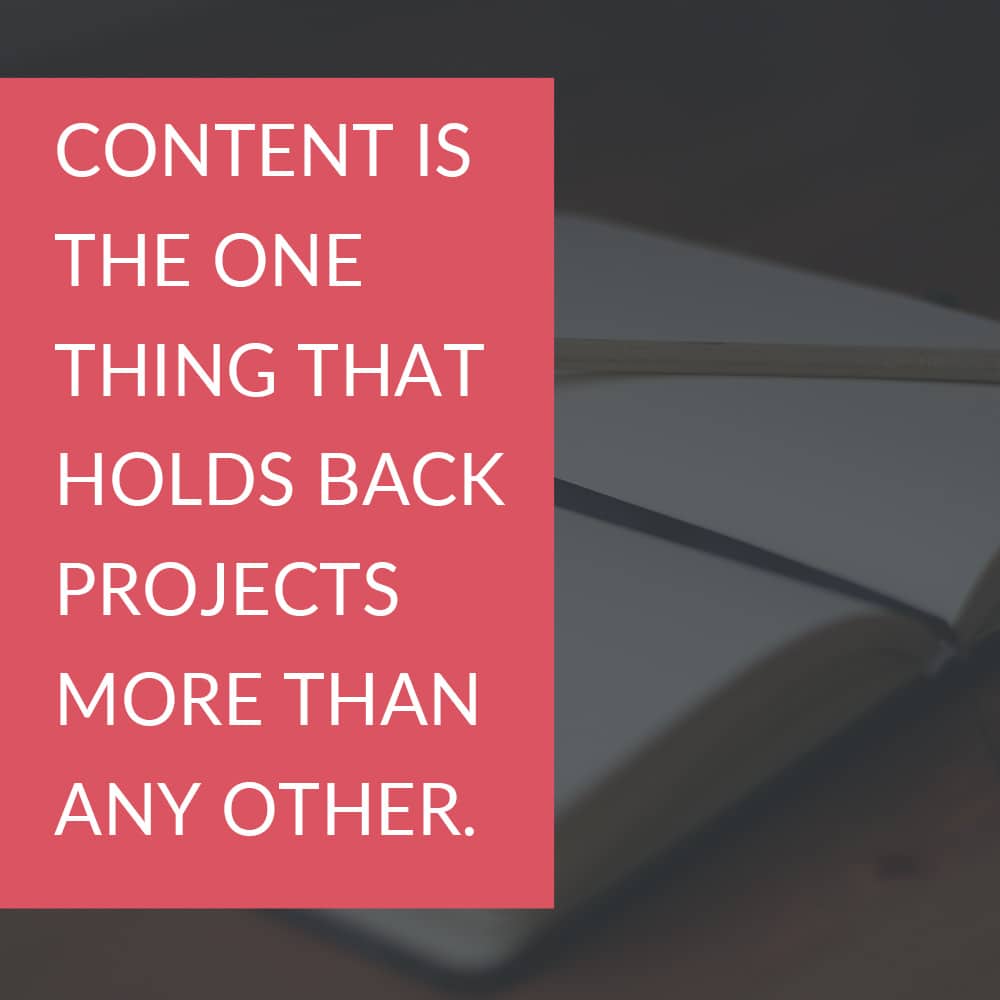
For the most part, my experience is that I can finish a website well before my client is able to get me updated content.
So, making a plan to get content with a client is a pretty delicate dance.
If it’s a redesign, you’ll be setting up new pages and removing others that are obsolete.
Most times a client will need to have context before they’re able to provide the copy. After all, if you don’t know you need an about paragraph why would you make one?
So, at the very least you have to make sure you’re making a timeline for them to get you the content you need at the stage of project you need it.
A word to the wise: a lot of times the layout of a page will break if the copy gets much longer or much shorter than the “Lorem” filler.
So, make sure that your client has a general idea of how many words they need for each section of a page. If not, you’ll be redesigning pages to adjust for the amount of content you receive.
4. Don’t Hide Your Limitations
Finally, make sure that you are upfront about what you’re good at and what you’re not so good at.
Most clients understand that freelancers are really likely to specialize in one area or another. And, if they don’t realize that then you don’t want them as clients.
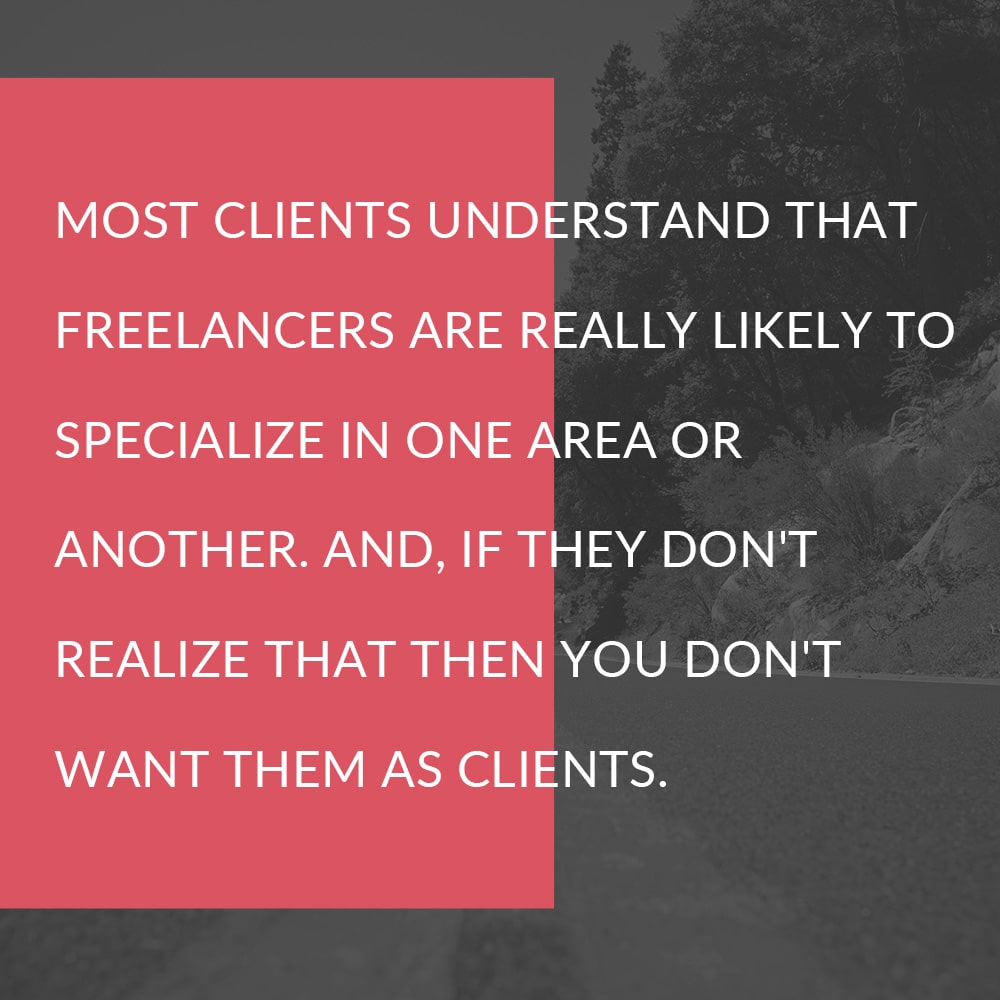
So, don’t worry that you won’t get the job if you admit to not being strong in an area they’re asking for.
You have to assume that you’re here to help them understand how working with a freelancer actually plays out.
Clients will come to you a lot of times and this will be the first or one of the first freelancers they’ve hired for something.
So, make sure to let them know how it all works.
If you tell them you can do everything then get ready for them to expect you to do everything.
You quickly become
- Brand designer
- Logo creator
- Copywriter
- Digital marketer
- Web developer
- Tech Support
- And, anything else that comes along
OR, if you only like working on one platform like SquareSpace then tell them that. The worst thing to do is change your mode of operation just to win a client.
You’ll find yourself in a huge mess with different things you’ve never worked with before. There is nothing that will slow down a project and potentially sabotage its quality like working with something you’re unfamiliar with.
Unless it happens to be something you’d like to work with in the future.
If I’m asked to do something I know I’m not good at OR on a platform I’ve never worked with before I ask myself, “is this something I want to learn?”
If it is then I’ll let them know I don’t have a lot of experience in that area but I’ve been wanting to learn about it. I’m happy to work on it for them BUT I couldn’t guarantee a certain level of quality since I’m new to this type of work.
All I can say is I will work hard to make sure they’re satisfied.
See what I did?
I didn’t grovel in my inability. I was honest but I spoke in confidence.
You’d be surprised how many clients have given me a shot at something I’ve never done before just because I was honest with them.
If I’m not interested in learning the particular skill the client needs then I have a list of people that I can refer them to. If they decide to look for someone that is the whole package then no harm no foul.
But, most times they’ll hire someone I’ve referred.
Wrapping Up
My mom always used to tell me:
“You’ll never get a second chance at a first impression.”
For that reason, I’ve always tried to make sure that I put my best foot forward every time I’m introduced to someone new in the world.
The same is true for freelance web design clients.
You only get one shot to make sure that you get a project started on the right foot.
So, do everything you can to make sure you’re fine-tuning your process and getting everything you need upfront.
You’ll have way fewer headaches and your clients will love you for it.
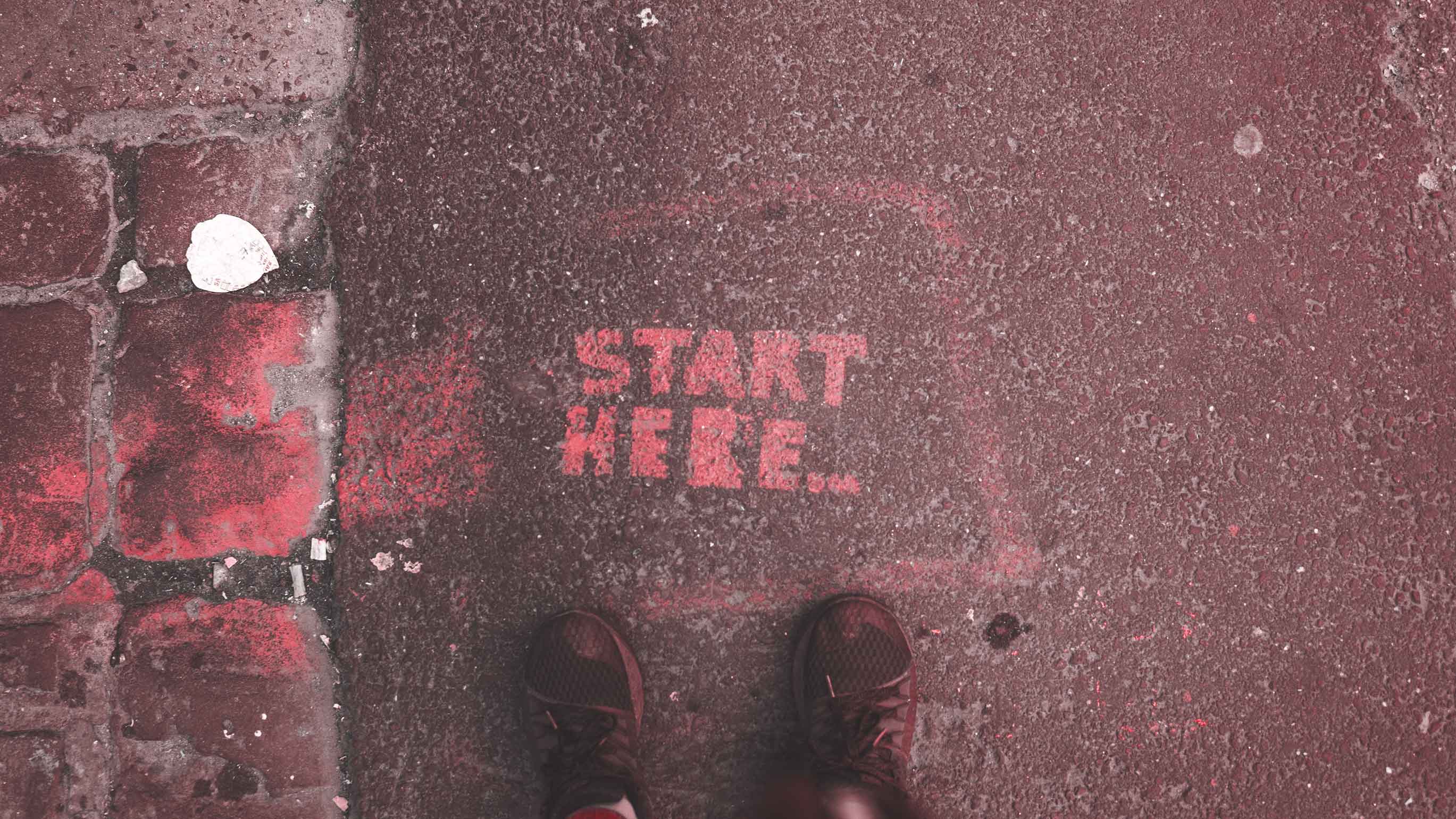
Comments